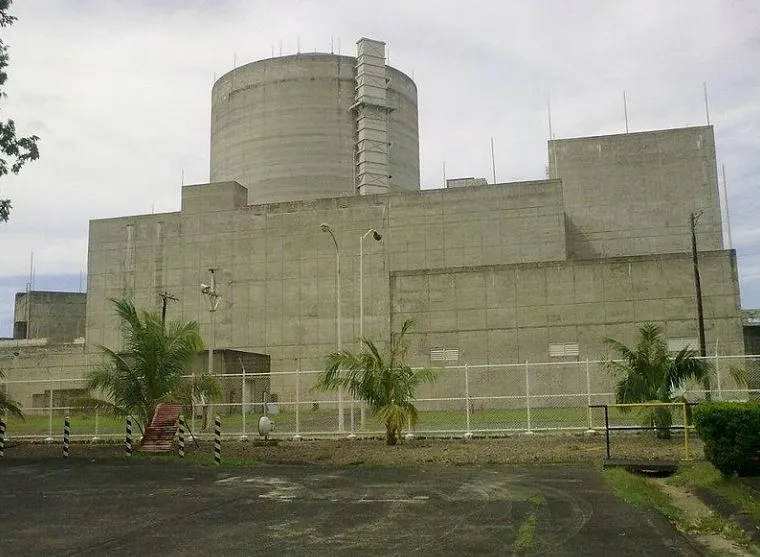
The ghosts of Bataan: Will Philippines see a new era of nuclear energy soon?
Some experts think it may be high time to revist the Bataan NPP.
The Philippines, a nation of 100 million inhabitants scattered over 7,000 islands, has all the makings for a solid nuclear industry, as well as tremendous baggage and legacy. Can a new partnership with a nuclear elder statesman see the Southeast Asian archipelago through to a new era?
Mercurial background
The history of the Filipino nuclear industry is one that is best defined as mercurial. Off to a great start in the late 1950s with the initiation of the Philippine Atomic Energy Commission (PAEC), the industry enjoyed the backing of dictator Ferdinand Marcos and with the advent of the Global Oil Crisis, the Philippines’ first nuclear power plant was commissioned in mid 1973. The Bataan Nuclear Power Plant has since become Asia’s greatest white elephant – mired in all too familiar corruption and controversy and despite being completed, the flagship energy project never produced a watt of power. The century old American energy rivals GE and Westinghouse went head-to-head before a presidential committee. GE tender was $200m more costly but the Westinghouse proposal, which came in at $500m, included few specifications.
The presidential committee went with GE, which was summarily revoked by Marcos despite the lack of specs with the rival proposal. Costs ballooned to $1.2m on the Westinghouse-won project. It was subsequently discovered that Westinghouse was selling similar technology to other emerging nations at less than half the price of the mounting invoices (also with little detail) being sent to PAEC. Backroom graft had clearly poisoned the project from the start but problems persisted. Following Three Mile Island, several thousand defects were discovered in the Bataan project while still under construction, incredibly, nobody in power had thought that the fact that Bataan was on a fault line and on the foothills of Mount Pinatubo as particularly relevant to the choice of site. Bataan was doomed. Eight years in costs had swelled to five time the tender, Marcos was overthrown and Chernobyl occurred. Nuclear - and Bataan - fell completely out of favour. The succeeding Aquino administration abandoned the plant and found that it was not economically prudent to convert to less controversial energy sources. Bataan is now a very expensive tourist attraction.
Letting go of the past
Power Management Specialist at PSALM Corp, Luisito Samsin, who is in charge of the privitisation of NPC assets, is clear, “Mostly politics play a ‘not-so-needed’ role in plans to build a nuclear plant. [Indeed], this is the right time to start planning, so that we can have one plant erected five years from now. The plan within the nuclear industry in the Philippines is to operate the Bataan Nuclear Plant. I believe we should forget about Bataan and build a new plant.”
Samsin’s point seems to support the majority sentiments about the ailing site. “Bataan is already old and there are new technologies available which are safer, cheaper and easier to operate. As a nation, we should focus on developing other site for building a nuclear plant.”
Cynthia Hernandez, an energy consultant at KPMG, Manila, is equally forthright, when asked if the Philippines can overcome the ghosts of Bataan, “To be blunt, I don’t think so.” She even suggests that the very establishment of a nuclear power sector will face barriers. “There is actually a strong case for a 1,000-2,000 MW nuclear power plant [be it Bataan or not] for baseload demand.” Nonetheless, Hernandez expects heavy resistance from the powerful fossil fuel industry, “this will probably be opposed by owners and developers of coal power plants, as it will affect their capacity utilisation significantly.”
Not all commentators agree with Samsin and Hernandez however, some arguing that nuclear will prevail and even that not all is lost with the Bataan site, suggesting that rather than simply a stay of execution, the controversial Duterte Administration may provide Bataan with a full reprieve. Dr Soledad Castaneda, Chief of the Atomic Research Division of the Philippine Nuclear Research Institute, who is responsible for providing direction and guidance in the planning of the Institute’s R&D activities, reminds us that just three years ago the Department of Energy spearheaded a local community forum on the resurrection of Bataan and that surprisingly opinions were mixed, “The activity was geared towards gauging the impression of the people on the possible rehabilitation of the existing nuclear plant. Following the conduct of the forums, the DOE believes that the BNPP complex should be preserved pending a final decision by the government on the utilisation of nuclear energy for power generation.” Adds Castaneda, “Recent pronouncements from the Duterte Administration supports the strategy to continue studies regarding nuclear energy as a long-term option for the country.”
Most recently…
Regarding Bataan, last year, government officials visited the controversial site. Inspecting senators (not nuclear experts) held a press conference concluding that Bataan was in good condition. It was later discovered that more than two thousand defects existed. More broadly Castaneda concedes that there the standard difficulties that exist with the development of a nuclear sector remain, regardless of the challenges centering on site-choice. These include, strengthening the value-chain of R and D from concept to market in terms of nuclear energy for power generation, human resource development, public awareness and acceptance, and strengthening nuclear regulatory framework – although stakeholder involvement and international linkages are continuously being enhanced.
Even if the Philippines looks to another site altogether, as advised by Samsin, a lot of big questions need asking. After all, the drive today is renewable energy. Having a five-year plan for a NPP will serve as an experiment to truly discover if the Philippines will, can, or even wants to proceed with including nuclear in the energy mix. It must be asked though with one grossly expensive experiment seemingly down the drain, why would the Philippines take this costly risk yet again?
Enter international linkages and stakeholders
Right on cue, international interest and stakeholder involvement is on the way. After decades of looking toward the United States and Korea for nuclear consulting and partnership, the Duterte Administration has given a nod to the Russian State Atomic Energy Corporation, Rosatom. The signing of the memorandum of co-operation for the peaceful use of atomic energy signals a serious commitment by the government to perhaps move away from traditional fuel sources in the future.
The Memorandum’s objectives include the development of the bilateral cooperation in peaceful uses of atomic energy in such areas as radiation technologies, experimental and functioning reactors construction and operation of nuclear power plants. Says CEO of Rosatom Alexey Likhachev, “The [Memorandum] offers our countries opportunities to cooperate in science and engineering in peaceful uses of atomic energy while making it possible to develop practical application of nuclear technology in healthcare, agricultural, and many other crucial sectors of the Philippines’ economy. We are willing to share unique experience of the Russian nuclear industry with our partners including cooperation in personnel training and public acceptance of nuclear power.”
According to Dr Castaneda, the Philippine government clearly recognises that the applications of nuclear energy in certain identified areas such as those outlined in the MoC, will contribute to achievement of Sustainable Development Goals. “The application of nuclear has benefitted the agricultural, health and medicine, industrial, and the environment sectors… and still many applications have to be explored. For its application as a power source, the government must come up with a national position.” Collaboration with top-tier international experts with a long history and vast experience is essential.
The Philippine Government has a firm and growing relationship now via the MoC with Russia, and the timing could not be better if the Archipelago is ever going to “go nuclear” and either do something--anything--with Bataan or just bury it and start afresh. In fact just last week, a delegation of 42 Vienna-based permanent representatives of foreign countries to international organisations visited Saint-Petersburg to view Russia’s advanced nuclear power technologies. Speaking on the Russian tour, Permanent Representative of the Philippines to the United Nations, Maria Zeneida Angara Collinson, said, “I am very impressed by the cutting-edge technology that we were shown today. It is a huge responsibility for Rosatom, for the city of Saint Petersburg to ensure that this cutting-edge technology not only benefits the people in the world, but also ensures safety. If Rosatom is able to do this, it will be the world leader in many respects.” Permanent Representative Collinson continued, “We are actively considering including the nuclear power in our energy mix. Because the Philippines is composed of many islands, we are an archipelago, perhaps, the floating nuclear power plant could be an answer to develop and industrialise the far-flung islands in the Philippines.”
The fundamental problem remains familiar with emerging nuclear players, and is well-summarised by Hernandez, “The MoC is really for the Philippine government to increase the understanding and expertise relating to nuclear energy. Because government initiatives really take a lot of time, I am not overly optimistic about its significance.” However with a hugely experiences first generation nuclear nation chaperoning the burgeoning east Asian state, its chances of achieving nuclear power are better than ever.
Written by Simon Hyett








![Cross Domain [Manu + SBR + ABF + ABR + FMCG + HBR + ]](https://cmg-qa.s3.ap-southeast-1.amazonaws.com/s3fs-public/styles/exclusive_featured_article/public/2025-01/earth-3537401_1920_4.jpg.webp?itok=WaRpTJwE)
![Cross Domain [SBR + ABR]](https://cmg-qa.s3.ap-southeast-1.amazonaws.com/s3fs-public/styles/exclusive_featured_article/public/2025-01/pexels-jahoo-867092-2_1.jpg.webp?itok=o7MUL1oO)









 Advertise
Advertise


